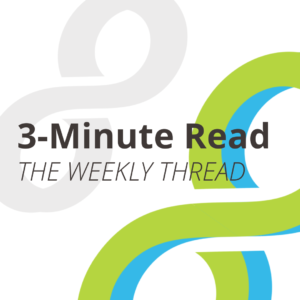Industry Partnership: What’s in it for researchers?
 March 27, 2023 — Successful partnerships often start with a conversation between a university professor and an industry researcher. Then the talk turns to action, and things can get complicated.
March 27, 2023 — Successful partnerships often start with a conversation between a university professor and an industry researcher. Then the talk turns to action, and things can get complicated.
Strategic partnerships require a diverse set of professionals behind the scenes to achieve long-term, fruitful outcomes. Universities (and often large, research-centric companies) have their own offices dedicated to nurturing these relationships. But the value proposition for sponsored research collaboration lies in gifted faculty. For long-term relationships to succeed, researchers themselves need a firm grasp of the essentials of sponsored research collaboration.
Industry-sponsored research exists to fill a business need. Corporate relations officers are often the conduit for information about partner company research goals, and their knowledge of faculty strengths is critically important to match expertise with a potential project. But it takes a motivated researcher to connect the dots between their capabilities and a company’s ideas and resources. That alignment creates the climate for success. Understanding the business case for research helps make the partnership mutually beneficial, so faculty conducting research should have clearly established goals, timelines, and resources that coordinate with the company’s needs. That takes stepping out of the academic mold to understand the industry partner’s perspective.
UIDP is dedicated to providing resources to deepen collaborations, including specific guidance for researchers. One of UIDP’s most valuable resources is the Researcher Guidebook and Quick Guide, originally funded by the National Science Foundation and Defense Threat Reduction Agency. We offer perspectives from both industry and university points of view on issues like managing expectations, working with proposals, budgeting, and handling sticky points like intellectual property and confidentiality. On the light side, UIDP’s two-minute video, “Five Ways to Nail Industry Presentations,” humorously illustrates what can go wrong when academic researchers aren’t tuned into their potential partner’s priorities.
Career impact on active researchers
If more rapidly advancing research outcomes and working with industry colleagues on a shared research thrust isn’t motivation enough for faculty to pursue collaboration, recent changes in promotion and tenure policy should provide the extra nudge.
Promotion and tenure (P&T) are huge faculty priorities, but historically, the path to P&T hasn’t fully accounted for innovation and entrepreneurship (I&E) achievements. At many institutions, faculty with industry funding, patents, startups, and successful commercialization of original research may not receive appropriate credit for these achievements.
A nationwide effort funded by an NSF grant has identified best practices to recognize innovation and entrepreneurship impact (PTIE) and distilled the work into an actionable set of recommendations universities can put to use in their tenure processes. The movement is gaining traction; universities across the country (including UIDP members Oregon State University, UC San Diego, and UC Irvine) are signing on and using them to reward entrepreneurial faculty that engage in sponsored research, create startups, and mentor students through industry-sponsored research.
Industry engagement also aids in the procurement of large-scale federal awards. By collaborating with industry partners, faculty members can access resources, develop more comprehensive research outcomes, ensure real-world impact, and increase their visibility, all of which can improve their chances of success when applying for federal funding. Additionally, joint solicitations are becoming more common avenues for funding, emphasizing the importance of cross-sector partnerships. Read more about joint solicitations here.
Why it matters
Researchers play a pivotal role in university-industry partnerships. Their work is the magnet for industry engagement in academia. Their research pushes R&D boundaries and is the future hope for solutions to the world’s most pressing issues. Ensuring they have the resources to succeed in industry collaborations and great reasons to pursue long-term, fruitful partnerships is critical.
We want to hear from you: How have researchers impacted your collaborations? How does your institution give your researchers what they need to reach their goals? Let us know on our LinkedIn page.


